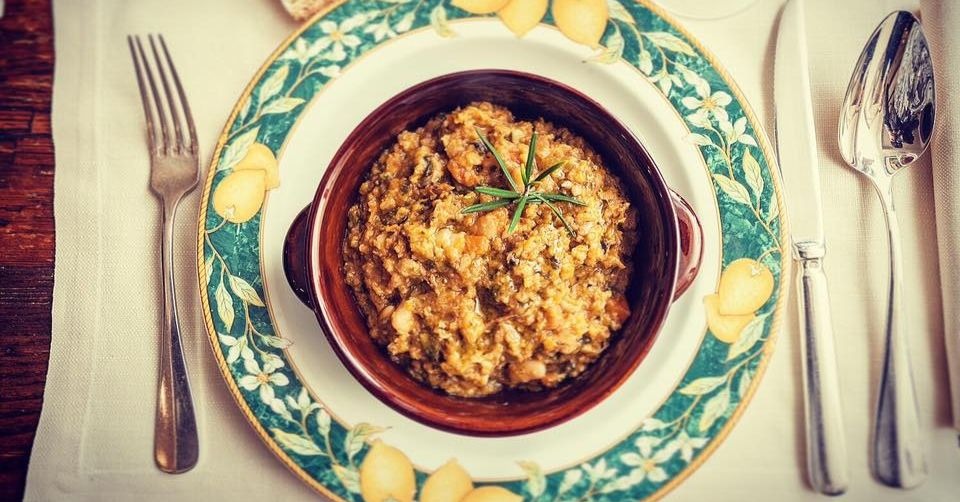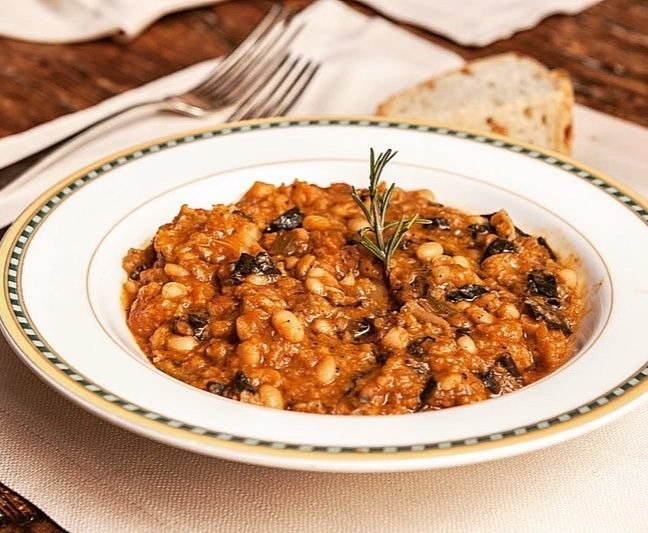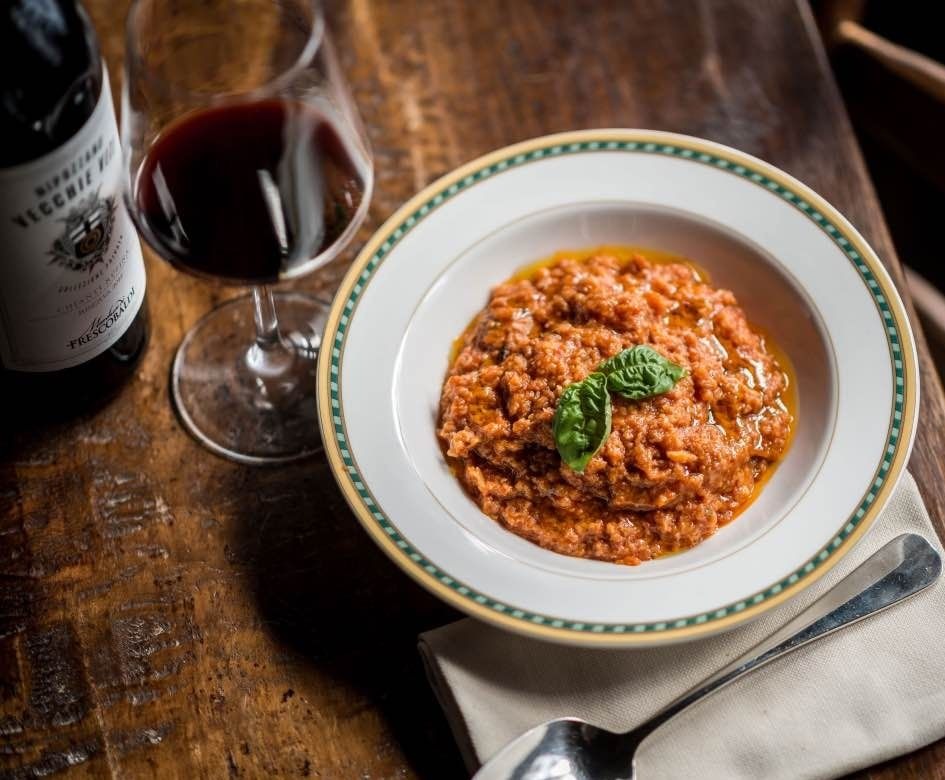
Florence culinary tour 1st stage: “i primi”
Curiosities and recipes of the most famous Florentine first courses: Pappa al pomodoro and Ribollita.
Perhaps not everyone knows that, while Florence is mostly associated as being a destination for meat-eaters, its typical first courses are completely vegetarian! As a matter of fact, they are dishes made with simple ingredients and of peasant origin, consisting solely of bread and vegetables. Tasty and nutritious, nowadays they are the perfect dishes for those who want to enjoy a lean, healthy, balanced and vitamin-rich diet!
It’s worth emphasising that as well as being both delicious and good for your health, both pappa al pomodoro (tomato soup) and ribollita are two first courses that were created to limit waste. In fact, in order not to waste even a crumb, farmers cooked the two dishes using loaves of stale bread. Enjoyable all year round, the two dishes are a flavourful example of sustainable cuisine.
CURIOSITY
- Pappa al pomodoro became known throughout Italy in 1912 thanks to the Florentine writer Vamba and his "Il Giornalino di Giamburrasca". In 1965, it even achieved television fame with Rita Pavone in the role of Giamburrasca and la pappa became a true celebrity with the song Viva la Pappa col Pomodoro
- Ribollita is a simple soup of bread and vegetables that was cooked in large quantities by farmers and boiled again (ribollita) several times in the following days. Hence its name!

Photo Credits: www.instagram.com/boccanegrafirenze/
AGNESE’S RECIPES
Let's move on to the action. We asked Florentine chef Agnese Pugi for her exclusive recipes. With more than ten years of experience in the kitchens of Florence, from award winning restaurants to 5-star hotels, (check out her Instagram for recipes in Italian and English!), here she gives us her valuable recipes for these two dishes. So now, there are no more excuses, we can all bring a bit of Florence into the kitchen.
Pappa al pomodoro
Serves 4
- 1 kg of ripe San Marzano tomatoes (only in summer) otherwise use 3 cans of 400 ml of high-quality peeled tomatoes
- 4 cloves of garlic
- 200 gr of basil
- About 2 lt of vegetable broth
- 600 gr sliced ??Tuscan bread
- Extra virgin olive oil, salt, sugar and pepper
- Fry the garlic cloves in plenty of extra virgin olive oil in a large saucepan. If using fresh tomatoes, lightly cut the peel of the tomato in an x-shape and place it in boiling water for 20 seconds, cool and remove the peel with the tip of the knife. Cut fresh tomatoes into pieces, or if using peeled tomatoes, roughly break them with your hands.
- When the garlic cloves are golden brown, remove them from the oil (they will have released their aroma) and add the tomato. Add a little salt and pepper, and about a tablespoon of sugar to counteract the acidity of the tomato. Cook over low heat for about 20 minutes.
- Once 20 minutes has passed, add half the chopped basil with your hands, mix well and season with salt and pepper. Continue cooking until the water contained in the tomato has dried a little, about another 15/20 minutes.
- In the saucepan where the tomato is cooking (over medium heat) add in this order: 4/5 slices of bread and heated vegetable broth a ladle at a time. Add the other half of the chopped basil by hand and mix well with a ladle. Continue cooking until the bread is completely wet and mixed with the tomato, if necessary add more vegetable broth. Cook for a further 20/30 minutes. The tomato soup will be ready when it has reached a slightly sticky consistency.
- Serve with a drizzle of good oil and a basil leaf.
Ribollita
(traditional family recipe handed down for over 100 years)
Serves 4/6
- 1 kg of dried cannellini beans
- 2 heads of black cabbage (cavolo nero)
- 3 onions
- 3 celery sticks
- 3 large carrots
- 3 cloves of garlic
- 1 can (400gr) of high-quality peeled tomatoes
- 700 gr of sliced stale Tuscan bread
- About 2 lt of vegetable broth
- Salt, extra virgin olive oil, pepper

Photo Credits: www.boccanegra.com

Photo Credits: www.instagram.com/boccanegrafirenze/
- Soak the cannellini beans in a bowl overnight, covered with water. The following day, cook them in plenty of water along with 1 celery stick, 1 carrot, 1 onion and a handful of coarse salt. Once cooked (about 1/1.5 hours, must be soft but not separated) remove the celery, carrot and onion, and place 2/3 of the mixture including the cooking water and blend in a blender or with a hand held mixer.
- Put the bean puree in a large pot, add the previously washed black cabbage, removing the stalk and chop finely. Place to boil and stir often (use a ladle with a flat tip to detach the mixture that tends to deposit). Add some vegetable broth to make the mixture creamier.
- In a pan with plenty of extra virgin olive oil, fry the remaining 2 onions, 2 carrots, 2 celery stalks and cloves of garlic, roughly chopped. Once the (golden) vegetables are well cooked, add the chopped peeled tomatoes with your hands, a little salt, and cook for about 15 minutes.
- Add everything into the pot of bean puree, add salt and pepper and cook for about 30 minutes, stirring regularly and adding vegetable stock to keep the mixture fairly liquid. This is the soul of our ribollita, if prepared properly it will give you an excellent result.
- Now our soup is almost finished. In a very large pot, make layers by alternating the liquid mixture of beans and black cabbage (it is advisable to keep some of this aside, about 500 ml by adding vegetable broth, it will be used at the final stage) the stale sliced ??bread and the whole beans and let it rest for about an hour with the heat off. To mix all the ingredients well, stir with a ladle trying to soften the slices of bread that must completely flake off inside the mixture.
- Add the broth previously kept aside (mashed beans, black cabbage and vegetable broth) and cook for at least an hour, stirring regularly.
- Serve with a drizzle of oil.
Do not miss the other episodes of the Florentine culinary tour!
- Episode 2: "i secondi"
- Episode 6: "secondi invernali"
Photo Header Credits: www.boccanegra.com






 All the services are provided by local merchants
All the services are provided by local merchants By using this site you support Florence
By using this site you support Florence We offer products with high-quality standards
We offer products with high-quality standards You stay sustainable
You stay sustainable It's a 100% trustworthy website
It's a 100% trustworthy website